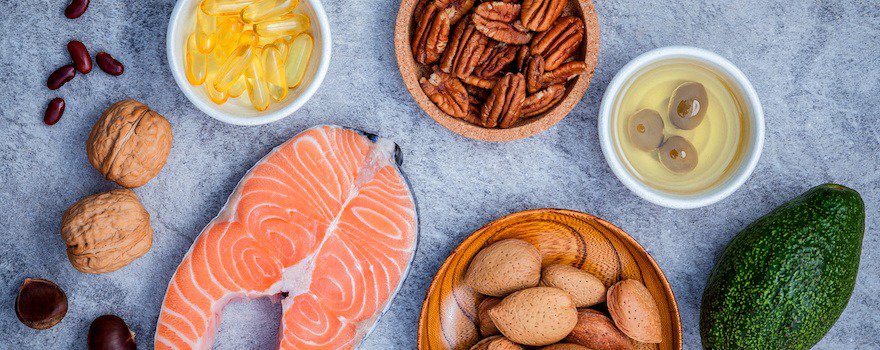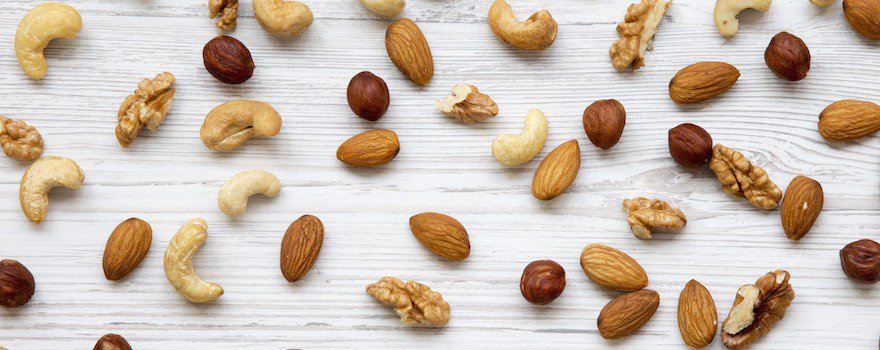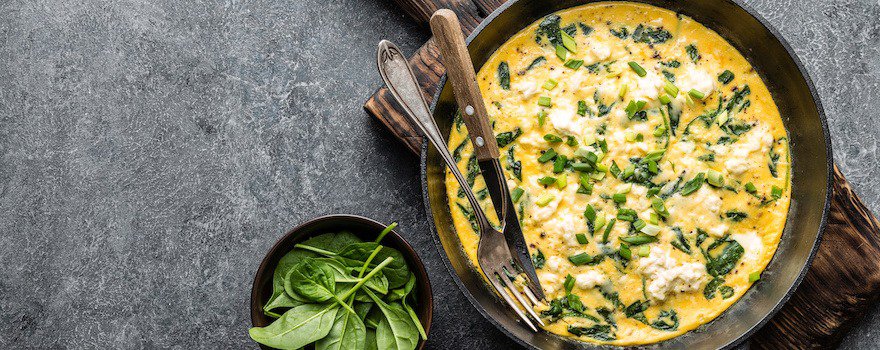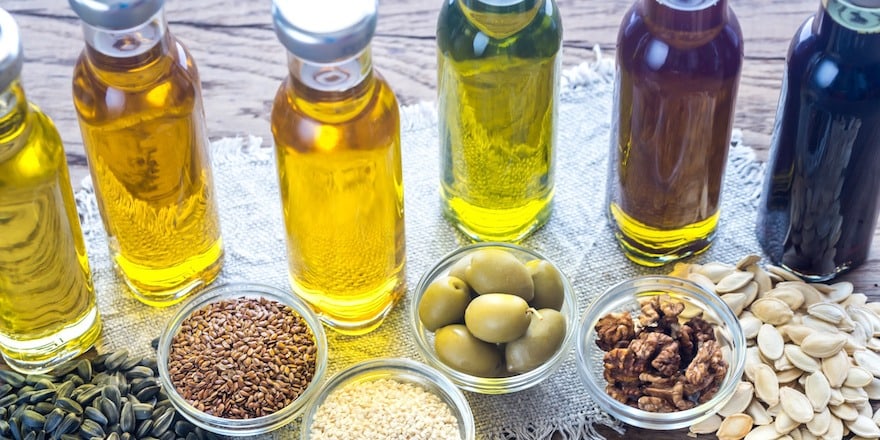What is it?
Lipids are vital elements for humans. They are among the seven essential constituents for the body, like minerals, vitamins, carbohydrates, proteins, trace elements, and water. They are assimilated to the body’s fat.
There are two main groups of lipids:
- Isoprenoids which include steroids (of which cholesterol is a part).
- Saturated and unsaturated fatty acids among which we find triglycerides.
There are so-called essential fatty acids: omega-6 and omega-3. These polyunsaturated fatty acids are primarily obtained from food since the body cannot synthesize them. Lipids are ingested as triglycerides, cholesterol, and phospholipids.
Lipids are a source of energy for the body. They play a role in forming cell membrane structures and in the composition of nerve cells.

Omega-3s are good lipids because they help increase good cholesterol. Excess omega-6 has a detrimental effect on the action of omega-3.
Transformed (or trans) fatty acids have little nutritional value. They are found in red meat, milk, and many industrial products. Lipids must be consumed in moderation to limit overweight, obesity, and the risk of cardiovascular diseases.
Functions of lipids
What are lipids used for? They are essential for the brain. They also fulfill numerous biological functions such as:
- Providing energy: 1 g of lipids equals 9 kCal
- Hormone synthesis: Steroid hormones, made from cholesterol, are part of the composition of membranes, skin cells, and nerve cells. In fact, the brain contains 50% lipids
- Transporting fat-soluble vitamins: vitamins E, A, D, and K can only be transported by lipids
- The formation of energy reserves
Signs of deficiency
Lipids work in harmony and optimally in the presence of carbohydrates and proteins. An insufficient intake of lipids can lead to:
- Malnutrition if lipid deficiencies are associated with deficiencies in carbohydrates and proteins
- Weight loss
- Fatigue
- Difficulty walking
- Growth disorders
Contrary to popular belief, the body needs lipids to function correctly. They should not be eliminated from the diet. Adopting a balanced diet is enough to avoid overconsumption of lipids.
Recommended daily needs
As with carbohydrates, there are no specific data regarding daily fat requirements. However, it is recommended to maintain daily lipid intake that corresponds to 35%-40% of total energy intake to maintain weight. Needs are nonetheless higher in athletes who draw their energy from the sugars and fats stored by the body.
Lipid metabolism
Lipids are linked with intestinal bile salts to be absorbed. They are then released in the form of chylomicrons, elements that transport lipids in the blood as lipoproteins. We distinguish between High-Density Lipoproteins (HDL) and Low-Density Lipoproteins (LDL, the bad cholesterol).
These two elements, associated with triglycerides, allow for determining the body’s lipid profile following a blood test. Lipoproteins characterize good and bad cholesterol. The risk of cardiovascular diseases increases when LDL levels (bad cholesterol) and triglycerides are high.
Top 5 foods containing lipids
It’s important to distinguish between good lipids and bad ones. In terms of diet, it’s preferable to favor natural fats over processed fats hidden in industrial products. Here is a selection of foods to prioritize to ensure your lipid intake.
1. Vegetable oils

Vegetable oils are rich in lipids and especially in essential fatty acids. Oils like canola, walnut, and flaxseed contain omega-3, while sunflower, grape seed, and corn oils are enriched with omega-6.
Vegetable oils are ideal for preparing salad dressings or cold dishes. They do not tolerate heat well and are not suitable for frying. Be mindful of the dosages when making your preparations. One to two tablespoons are enough.
2. Red meat

Red meat is rich in saturated fats. It is an interesting natural source of lipids. Beef contains about 21.5g of lipids per 100g.
Red meat is excellent grilled, baked, or pan-fried. It can be served with vegetables and starches. It is preferable to favor baking and avoid adding fats!
It is recommended to consume red meat occasionally, for your health (saturated fats contain bad cholesterol) and for the planet.
3. Dried Fruits

Walnuts, hazelnuts, almonds, and cashews are excellent sources of essential fatty acids. Don’t hesitate to add them to your menu!
Dried fruits can be consumed as they are during snacks. It is advised to eat only a handful as they are very calorie-dense. You can also add pieces of dried fruits to salads or cooked dishes.
Favor products from organic farming to enjoy all their nutritional qualities.
4. Fatty Fish

Rich in omega-3, fatty fish like tuna, salmon, sardines, mackerel, or herring are good for the brain and health. It is advised not to consume them more than twice a week.
Also read | How to choose omega-3 supplements?
These fish can be cooked in the oven, en papillote, or steamed. Ideally, accompanied by a portion of grilled vegetables and a portion of starches.
Avoid adding a fatty sauce to this dish to limit lipid intake. Adding a dash of lemon and spices is generally enough to enhance it. It’s delicious!
5. Eggs

Eggs contain a lot of protein, but they are also foods rich in lipids. Indeed, the egg yolk is high in cholesterol, and therefore has excellent nutritional qualities.
Athletes understand this well and generally consume them in large quantities. However, it is advised to not eat more than five eggs per week to avoid excess lipid intake.
Eggs are the base of many recipes, especially in baking. They can be enjoyed scrambled, fried, as an omelet, or soft-boiled, at breakfast or other meals. They deliciously accompany salads or potatoes.
Symptoms of Lipid Overdose
Overconsumption of lipids is harmful to health. While omega-3s play a protective role for heart function, an excess of lipids increases the risks of cardiovascular diseases.
To limit these risks, ensure adequate consumption, select products enriched with good fatty acids. It’s recommended to avoid sedentary behavior by engaging in regular physical activity.
Symptoms of lipid overdose are:
- Onset of overweight/obesity
- Cardiovascular diseases (hypertension, atherosclerosis, increased risk of myocardial infarction based on age)
- Insulin resistance (resistance to insulin with high blood sugar levels). This condition can lead to type 2 diabetes.
Butter, fried foods, pastries, processed meats, snacks, burgers, and processed foods are sources of trans fatty acids. Too rich in lipids, they are harmful to health and contribute to an increase in overweight and obesity.
It is therefore better to limit industrial foods and favor natural products for a balanced diet. For health reasons, it is also advised to check the energy content stated on industrial food packaging.



